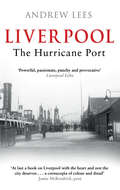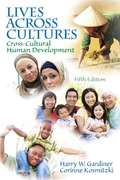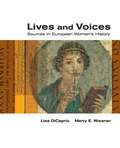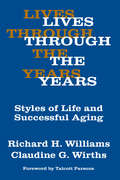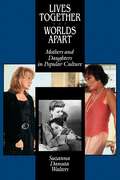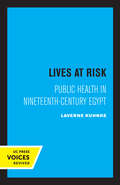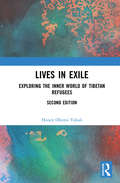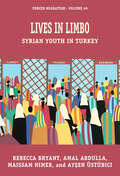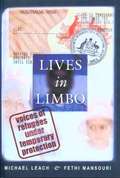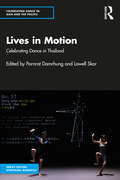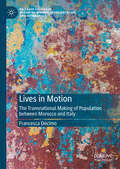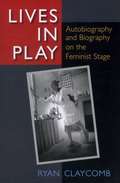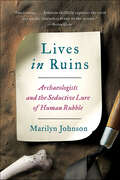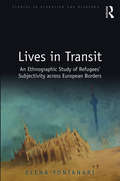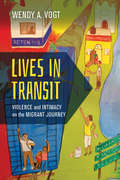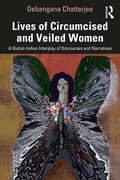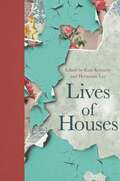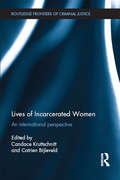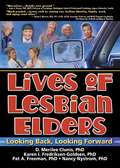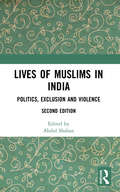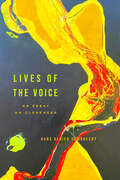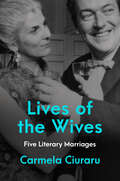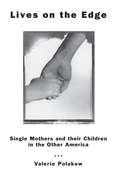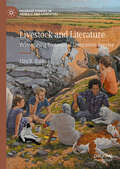- Table View
- List View
Liverpool: The Hurricane Port
by Andrew LeesScousers believe they live in a special place, one that has more in common with Salvador da Bahia, New Orleans or Gdansk than anywhere in England, and the city has always punched above its weight. In less than a hundred years, however, Liverpool's image has declined from a major mercantile player known as the Second City of the Empire to what some social commentators have described as a cultural backwater remembered largely as the place where the Beatles were born.In Liverpool: The Hurricane Port, Andrew Lees reveals how Liverpool's pre-eminence in the slave trade left an indelible scar on the psychogeography of the city. He also explores the roots of Liverpool's contrary nature, its rebelliousness and its hedonism, as well as some of the recent hurricanes that have battered the city, including the anger of Toxteth, the Hillsborough disaster and the murder of James Bulger. In this distinctly personal account, Lees defines the characteristics of this Celtic enclave, with her loudmouthed, big-hearted people who have created a city quite different from anywhere else in the world.
Lives Across Cultures: Cross-cultural Human Development, 5th Edition
by Harry W. Gardiner Corinne KosmitzkiInterdisciplinary exploration of cross-cultural human development throughout the lifespan. Presented in a chronological-within-topics approach, covering the entire lifespan, this text focuses on cultural similarities and differences in human development throughout the world while emphasizing links among theory, research and practical applications. Combining the latest research with vignettes, stories, and personal experiences in their highly-praised, scholarly, yet engaging conversational - and frequently humorous - writing style, the authors make the study of similarities and differences an exciting experience.
Lives And Voices: Sources In European Women's History
by Lisa DiCaprio Merry WiesnerWorld War I and the Russian Revolution: Women's popular protests in Berlin -- Interwar period: Women and French fascism / L. Blondel -- Women and fascism, World War II, and the Holocaust: A mother's diary / N. Last -- Women and post-war Europe, 1945-1980: I am a feminist / S. de Beauvoir -- The 1980s to the present: Conservative Party principles / M. Thatcher. [This] reader ... anthologizes primary source materials about women's lives and presents an overview of the variety of women's experiences dating from ancient Mesopotamia to contemporary Bosnia. This primary source reader includes classics in women's history such as works by Plato, Christine de Pizan, Mary Wollstonecraft, and Virginia Woolf, as well as sources that have never before been published in English. The collection ... ranges widely in terms of topic, social class, and geography; both male- and female-authored texts are included to present a range of normative, descriptive, and reflective materials. Topics discussed include family, work, religion, culture, immigration, global economy, and politics.
Lives Through the Years: Styles of Life and Successful Aging
by Claudine G. Wirths Richard A. WilliamsGrowing old - what is it like? What are the main problems of the aging? Lack of fulfillment in their work and life? Loneliness? Anxiety about sickness and disability? Fear of death? This well-documented, theoretically systematic, and vivid account of the process of aging provides highly enlightening answers and dispels once and for all many of the myths surrounding the close to 20 million Americans who are over sixty-five. Building upon the results of extensive interviews, the authors have established the existence of six styles and have concluded that a successful transition to old age can be achieved through any of them. They have also developed a definition of success, which has practical implications, since it deals with the extent to which an individual contributes or is a burden to the lives of those around him. The combined analysis of style and success results in a better understanding of individual differences in aging. The reader comes to know and understand the subjects as if he had worked with them in person. The wealth of detail the case histories contain permits scholars and students to judge for themselves the validity of the authors' findings. Derived from this unusually rich body of material, the authors' conclusions and recommendations are invaluable to all concerned with the study, the treatment, and the counseling of the aged. "Lives Through the Years" is a pioneering volume of social inquiry and interpretation, which marks a major scientific advance in its field, opens up new horizons for fruitful research, and offers a stimulating and authoritative portrayal of one of the most important problems of our society.
Lives Together/Worlds Apart: Mothers and Daughters in Popular Culture
by Suzanna Danuta WaltersIn the 1940s film Now, Voyager, Bette Davis plays a daughter struggling against her mother's stifling repression. Nearly fifty years later, in the Hollywood saga Postcards from the Edge, Shirley MacLaine, as a neglectful and bossy mother, inflicts untold psychological pain on her daughter, played by Meryl Streep. These dramas of conflict and the ambivalent struggle for separation have been central to popular images of mothers and daughters in the last half-century in the U.S. Walters boldly challenges these dichotomies and proposes an innovative and multilayered understanding of the cultural construction of the mother/daughter relationship.In a discussion of popular media ranging from themes of maternal martyrdom to maternal malevolence, Walters shows that since World War II, mainstream culture has generally represented the mother/daughter relationship as one of never-ending conflict and thus promoted an "ideology of separation" as necessary to the daughter's emancipation and maturity. This ideological move is placed in a social context of the anti-woman backlash of the early post-war period and the renewed anti-feminism of the Reagan and Bush years.Walters uses exceptions to mainstream imagery-films such as A Tree Grows in Brooklyn, television shows like "Maude," novels like The Joy Luck Club-to offer evidence of alternative traditions and paradigms. Timely and vividly argued, Lives Together/Worlds Apart makes a brilliant contribution to discussions of popular culture and feminism.
Lives at Risk: Public Health in Nineteenth-Century Egypt (Comparative Studies of Health Systems and Medical Care)
by LaVerne KuhnkeLives at Risk describes the introduction of Western medicine into Egypt. The two major innovations undertaken by Muhammad Ali in the mid-nineteenth century were a Western-style school of medicine and an international Quarantine Board. The ways in which these institutions succeeded and failed will greatly interest historians of medicine and of modern Egypt. And because the author relates her narrative to twentieth-century health issues in developing countries, Lives at Risk will also interest medical and social anthropologists. The presence of the quarantine establishment and the medical school in Egypt resulted in a rudimentary public health service. Paramedical personnel were trained to provide primary health care for the peasant population. A vaccination program effectively freed the nation from smallpox. But the disease-oriented, individual-care practice of medicine derived from the urban hospital model of industrializing Europe was totally incompatible with the health care requirements of a largely rural, agrarian population. This title is part of UC Press's Voices Revived program, which commemorates University of California Press's mission to seek out and cultivate the brightest minds and give them voice, reach, and impact. Drawing on a backlist dating to 1893, Voices Revived makes high-quality, peer-reviewed scholarship accessible once again using print-on-demand technology. This title was originally published in 1990.
Lives in Exile: Exploring the Inner World of Tibetan Refugees
by Honey Oberoi VahaliThis book explores the devastating consequences and psychological ruptures of refugeehood as it evocatively recounts the life histories of dislocated Tibetans expelled from their homes since 1959. Following the genre of a story, the book offers dynamic understandings of unconscious processes and the intergenerational transmission of trauma across generations of an exiled and internally displaced people. The book analyses the paradoxical spaces which Tibetans in exile occupy as they strive to preserve their cultural and spiritual heritage, rituals, religion, and language while also dynamically remoulding themselves to adapt to their living realities. Presenting a nuanced picture, it narrates stories of refugees, political prisoners and survivors of torture along with stories of loss and angst, cultural celebrations and political demonstrations. The author in this new edition highlights and explores the art, artists, and poetry in the exiled community. The volume also looks at the significance of Buddhism and the philosophy of the Dalai Lama for the people in exile and the personal and collective will of the community to connect their lost past to a living present and an imagined future. Rooted in the psychoanalytical tradition, this book will be of interest to psychologists, sociologists, political scientists, scholars of literature, and arts and aesthetics. It will also appeal to those interested in Sino-Tibetan relations, Buddhist studies, South Asian Studies, cultural and peace studies, and those working with refugees, and displaced persons.
Lives in Limbo: Syrian Youth in Turkey (Forced Migration #49)
by Rebecca Bryant Maissam Nimer Ayşen Üstübici Amal AbdullaMore than a decade since the start of the war in Syria, Turkey is home to almost four million of that country’s displaced citizens. Youth is one of the most vulnerable groups within the refugee population, as they struggle with language and education barriers and demands on them to assimilate while retaining their own culture. Lives in Limbo gives voice to the dreams of Syrian youth who have little hope of returning to their devastated homeland and explains why this generation’s future will shape how the region will develop. It explores how refugee youth create futures from the liminality of exile.
Lives in Limbo: Voices of Refugees Under Temporary Protection
by Michael Leach Fethi MansouriIn this book, 35 refugees, all temporary protection visa (TPV) holders and mostly from Iraq and Afghanistan, talk directly about their quest for asylum in Australia. They provide poignant details of persecution in their home country, their journey to Australia, prolonged periods of mandatory detention, and life under Australia's controversial temporary protection regime.
Lives in Motion: Celebrating Dance in Thailand (Celebrating Dance in Asia and the Pacific)
by Pornrat Damrhung Lowell SkarLives in Motion celebrates dance in Thailand, focusing on the diversity of Thailand’s dance cultures and their place in today’s world. Giving voice to eminent artists and scholars on the complex roles that Thailand is pursuing for artful movement at home and abroad, the book provides key perspectives on Thai dance traditions and practitioners. It explores the many forms and meanings in contemporary dance, changing local traditions in the country, the evolution of Thai dance on the global stage, and hybrid features of the Thai dance world. The book examines how hybridity has been integral to dance cultures in Thailand and discusses how they have actively adapted and negotiated their knowledge in relation to modernity and globalization. Developing new models, standards and sites for dance, movement and theater, dance in Thai has been advancing in innovative ways, whether it is to include fresh forms of skilled bodily movement or to expand in new arenas like tourism and online platforms. Similarly, old systems of training, which included artists’ homes, palaces, and temples, have been adapted into the new world of modern education, media, home schooling, and new community rituals. A pioneering contribution on Thai performing arts, this volume examines contemporary Thai dance cultures in the local, national, regional, and global contexts. It will be of great interest to scholars and researchers of dance and performance studies, cultural studies, Southeast Asia studies, and art.
Lives in Motion: The Transnational Making of Population between Morocco and Italy (Palgrave Studies in Mediating Kinship, Representation, and Difference)
by Francesca DecimoThis book focuses on global mobility and the worldwide articulation of family life, understood as dimensions of social change that come off from the private sphere of individuals and reverberate to the point of transforming the composition of national populations. Delving into the interrelation of migration and life courses, the volume investigates how individual mobility paths are intertwined with family matters and the way population movements are embedded in a myriad of intimate and household affairs. The inquiry is based on qualitative data and specifically focused on the migratory flow between Morocco and Italy through an exploration that encompasses a range of interrelated issues such as: transnational marriages, intimacy, love, daily domestic life, the formation of second generations and citizenship. Providing an exhaustive analysis of such phenomena, the book portrays cultural diversity in a nuanced manner and, in so doing, contributes to de-politicize widely stigmatized traits of migrant families.
Lives in Play: Autobiography and Biography on the Feminist Stage
by Ryan ClaycombLives in Play explores the centrality of life narratives to women's drama and performance from the 1970s to the present moment. In the early days of second-wave feminism, the slogan was "The personal is the political. " These autobiographical and biographical "true stories" have the political impact of the real and have also helped a range of feminists tease out the more complicated aspects of gender, sex, and sexuality in a Western culture that now imagines itself as "postfeminist. " The book's scope is broad, from performance artists like Karen Finley, Holly Hughes, and Bobby Baker to playwrights like Suzan-Lori Parks, Maria Irene Fornes, and Sarah Kane. The book links the narrative tactics and theatrical approaches of biography and autobiography and shows how theater artists use life writing strategies to advance women's rights and remake women's representations. Lives in Play will appeal to scholars in performance studies, women's studies, and literature, including those in the growing field of auto/biography studies. " A fresh perspective and wide-ranging analysis of changes in feminist theater for the past thirty years . . . a most welcome addition to the literature on theater, in particular scholarship on feminist practices. " --Choice "Helps sustain an important history by reviving works of feminist theater and performance and giving them a new and refreshing context and theorical underpinning . . . considering 1970s performance art alongside more conventional play production. " --Lesley Ferris, The Ohio State University
Lives in Ruins: Archaeologists and the Seductive Lure of Human Rubble
by Marilyn JohnsonThe author of The Dead Beat and This Book is Overdue! turns her piercing eye and charming wit to the real-life avatars of Indiana Jones—the archaeologists who sort through the muck and mire of swamps, ancient landfills, volcanic islands, and other dirty places to reclaim history for us all.Pompeii, Machu Picchu, the Valley of the Kings, the Parthenon—the names of these legendary archaeological sites conjure up romance and mystery. The news is full of archaeology: treasures found (British king under parking lot) and treasures lost (looters, bulldozers, natural disaster, and war). Archaeological research tantalizes us with possibilities (are modern humans really part Neandertal?). Where are the archaeologists behind these stories? What kind of work do they actually do, and why does it matter?Marilyn Johnson’s Lives in Ruins is an absorbing and entertaining look at the lives of contemporary archaeologists as they sweat under the sun for clues to the puzzle of our past. Johnson digs and drinks alongside archaeologists, chases them through the Mediterranean, the Caribbean, and even Machu Picchu, and excavates their lives. Her subjects share stories we rarely read in history books, about slaves and Ice Age hunters, ordinary soldiers of the American Revolution, children of the first century, Chinese woman warriors, sunken fleets, mummies.What drives these archaeologists is not the money (meager) or the jobs (scarce) or the working conditions (dangerous), but their passion for the stories that would otherwise be buried and lost.
Lives in Transit: An Ethnographic Study of Refugees’ Subjectivity across European Borders (Studies in Migration and Diaspora)
by Elena FontanariThis book explores the border-crossing mobilities of refugees within Europe. Based on ethnographic fieldwork in Germany and Italy, it examines the precarious everyday lives of non-citizens living between and beyond EU internal borders. With attention to the constant re-construction of borders within Europe through negotiation practices, the author shows how the tensions that exist between refugees on the move and the structural constraints that limit their movement produce ‘interstices’ – small spaces of possibility that open up as a result of refugees’ struggling within structural constraints. A comprehensive understanding of the long-term effects of EU borders upon refugees’ lives is then afforded through a particular focus on the post-arrival period. Examining the protracted precariousness and multi-directional hyper-mobility in Europe that emerges from the dynamics of the relation between structural mechanisms and the agency of individuals, Lives in Transit reveals how the border regime in Europe impacts mostly upon the temporal rather than the spatial dimensions of refugees’ lives, affecting their subjectivities and sense of self. This ‘dispossession’ of time is advocated as the main problem with the experience of refugees in Europe, causing them to claim a temporal justice, which seeks to gain back control of their own lives and personhood. Calling for migration to be understood as a process of ‘becoming subjects’, this volume will appeal to scholars of sociology, anthropology, and politics with interests in migration and diaspora studies.
Lives in Transit: Violence and Intimacy on the Migrant Journey (California Series in Public Anthropology #42)
by Wendy A. VogtLives in Transit chronicles the dangerous journeys of Central American migrants in transit through Mexico. Drawing on fieldwork in humanitarian aid shelters and other key sites, Wendy A. Vogt examines the multiple forms of violence that migrants experience as their bodies, labor, and lives become implicated in global and local economies that profit from their mobility as racialized and gendered others. She also reveals new forms of intimacy, solidarity, and activism that have emerged along transit routes over the past decade. Through the stories of migrants, shelter workers, and local residents, Vogt encourages us to reimagine transit as a site of both violence and precarity as well as social struggle and resistance.
Lives of Circumcised and Veiled Women: A Global-Indian Interplay of Discourses and Narratives
by Debangana ChatterjeeThe book unravels the politics of representation and the process of exoticising women’s bodies through the prism of external gaze and knowledge production. It brings out the intricacies of representational discourses around cultural practices of female circumcision (FC)/female genital cutting (FGC) and Islamic veiling. Focusing on crucial international legal texts and national legislation, the book gives an overview of the cultural nuances in FC/FGC and juxtaposes it with the Indian variation, khafz. The author studies the international veiling narratives that conjure up a fractured discourse containing aspects of colonialism, Islamophobia, and Islamic fashion and maps them with the regional variations of Islamic purdah in India. The volume explores the cultural practice of khafz and purdah through narratives in India, portraying how representational factors from international discourses reflect on the Indian context and vice versa. Amid the world of binaries and polarised opinions, the book offers a nuanced analysis of the space in-between, characterised by narratives from women. By situating women’s narratives in relation to family, community, state, and international politics, the book explores the global-Indian interplay of discourses on FC/FGC and Islamic veiling. This volume will be of interest to scholars, students, and readers of gender studies, feminism, cultural and religious studies, sociology, South Asian studies, and International Relations.
Lives of Houses
by Hermione Lee Kate KennedyA group of notable writers—including UK poet laureate Simon Armitage, Julian Barnes, Margaret MacMillan, and Jenny Uglow—celebrate our fascination with the houses of famous literary figures, artists, composers, and politicians of the pastWhat can a house tell us about the person who lives there? Do we shape the buildings we live in, or are we formed by the places we call home? And why are we especially fascinated by the houses of the famous and often long-dead? In Lives of Houses, a group of notable biographers, historians, critics, and poets explores these questions and more through fascinating essays on the houses of great writers, artists, composers, and politicians of the past.Editors Kate Kennedy and Hermione Lee are joined by wide-ranging contributors, including Simon Armitage, Julian Barnes, David Cannadine, Roy Foster, Alexandra Harris, Daisy Hay, Margaret MacMillan, Alexander Masters, and Jenny Uglow. We encounter W. H. Auden, living in joyful squalor in New York's St. Mark's Place, and W. B. Yeats in his flood-prone tower in the windswept West of Ireland. We meet Benjamin Disraeli, struggling to keep up appearances, and track the lost houses of Virginia Woolf and Elizabeth Bowen. We visit Benjamin Britten in Aldeburgh, England, and Jean Sibelius at Ainola, Finland. But Lives of Houses also considers those who are unhoused, unwilling or unable to establish a home—from the bewildered poet John Clare wandering the byways of England to the exiled Zimbabwean writer Dambudzo Marechera living on the streets of London.With more than forty illustrations, Lives of Houses illuminates what houses mean to us and how we use them to connect to and think about the past. The result is a fresh and engaging look at house and home.Featuring Alexandra Harris on moving house ● Susan Walker on Morocco's ancient Roman House of Venus ● Hermione Lee on biographical quests for writers’ houses ● Margaret Macmillan on her mother's Toronto house ● a poem by Maura Dooley, "Visiting Orchard House, Concord, Massachusetts"—the house in which Louisa May Alcott wrote and set her novel Little Women ● Felicity James on William and Dorothy Wordsworth's Dove Cottage ● Robert Douglas-Fairhurst at home with Tennyson ● David Cannadine on Winston Churchill's dream house, Chartwell ● Jenny Uglow on Edward Lear at San Remo's Villa Emily ● Lucy Walker on Benjamin Britten at Aldeburgh, England ● Seamus Perry on W. H. Auden at 77 St. Mark's Place, New York City ● Rebecca Bullard on Samuel Johnson's houses ● a poem by Simon Armitage, "The Manor" ● Daisy Hay at home with the Disraelis ● Laura Marcus on H. G. Wells at Uppark ● Alexander Masters on the fear of houses ● Elleke Boehmer on sites associated with Zimbabwean writer Dambudzo Marechera ● Kate Kennedy on the mental asylums where World War I poet Ivor Gurney spent the last years of his life ● a poem by Bernard O'Donoghue, "Safe Houses" ● Roy Foster on W. B. Yeats and Thoor Ballylee ● Sandra Mayer on W. H. Auden's Austrian home ● Gillian Darley on John Soane and the autobiography of houses ● Julian Barnes on Sibelius and Ainola
Lives of Incarcerated Women: An international perspective (Routledge Frontiers of Criminal Justice)
by Candace Kruttschnitt Catrien BijleveldDrawing on qualitative and quantitative research from around the world, this book brings together renowned international scholars to explore life-course perspectives on women’s imprisonment. Instead of covering only one aspect of women’s carceral experiences, this book offers a broader perspective that encompasses women’s pathways to prison, their prison experiences and the effects of these experiences on their children’s well-being, as well as their subsequent chances of desisting from crime.Encompassing perspectives from the Netherlands, Belgium, Denmark, Scotland, the United States, Ukraine and Sri Lanka, this book uncovers the similarities across time and space in women offenders’ life histories and those of their children and examines the differences in women’s experiences and trajectories by shedding light on the moderating effects of particular cultural contexts. Lives of Incarcerated Women will be of interest to academics and students engaged in the study of punishment, penology, life-course criminology, women and crime and gender studies. It will also be of great interest to practitioners.
Lives of Lesbian Elders: Looking Back, Looking Forward
by D. Merilee Clunis J Dianne Garner Pat A. Freeman Nancy M. Nystrom Karen I. Fredriksen-GoldsenThe untold history of lesbian life from those who have lived it! Lives of Lesbian Elders: Looking Back, Looking Forward illuminates the hopes, fears, issues, and concerns of gay women as they grow older. Based on interviews with 62 lesbians ranging in age from 55 to 95, this very special book provides a historical account of the shared experiences of the lesbian community that is so often invisible or ignored in contemporary society. The book gives voice to their thoughts and feelings on a wide range of issues, including coming out, identity and the meaning of life, the role of family and personal relationships, work and retirement, adversity, and individual sources of strength and resilience. Cast off and overlooked at best or victims of scorn and prejudice at worst, lesbians in the twentieth century lived dual lives, their full voices unheard-until now. Lives of Lesbian Elders chronicles the life choices they made and their reasons for making them, set against the contexts of culture, politics, and the social mores of the eras in which they lived. Their stories of courage, resilience, resourcefulness, pride, and independence help restore lesbian history that has been forgotten, distorted, or disregarded and provide the information necessary to meet the future needs of aging lesbians. Lives of Lesbian Elders gives aging lesbians a chance to discuss their thoughts on a variety of topics, including: Coming out "You didn&’t talk about it . . . Until two years ago, I never even referred to a lesbian or would I allow the word to pass my lips" "I used to sneak into libraries and read about homosexuality and back in that era, it was not classy . . . it was classified as a disorder of some type" Identity "The only difference between me and anybody else is that I just happen to be sleeping with a woman" "I think I grew up not really knowing who I was and, I think, probably fighting all my life trying to find out who I was" Family "I feel very connected with the lesbian community here . . . I guess I would call that family" "Many years ago, my sister said: &’I think when they&’re ready, you need to explain to (the nieces) what a lesbian is, because I want them to hear the correct story . . . I want them to hear what it really is and not all these stupid rumors that go around&’" Work "I was going to become a youth minister at one point and it dawned on me in high school that there was no way the church was going to let me work with kids" "I didn&’t really finish my career . . . I still have dreams about the military and about not finishing . . . It was my choice, but it wasn&’t really my choice" Aging and the Future "I think financing, of course, is a real big problem for lesbian women" "I have a concern that if anything should happen to my partner-in growing older-of being isolated from the gay community" . . . and much more! Lives of Lesbian Elders: Looking Back, Looking Forward also includes appendices that present demographic data on the women who were interviewed for the book, information on historical timelines, and suggested readings on lesbian history. The book is an invaluable addition to the growing collective history of lesbians in the United States.
Lives of Muslims in India: Politics, Exclusion and Violence
by Abdul ShabanThe fast-consolidating identities along religious and ethnic lines in recent years have considerably ‘minoritised’ Muslims in India. The wide-ranging essays in this volume focus on the intensified exclusionary practices against Indian Muslims, highlighting how, amidst a politics of violence, confusing policy frameworks on caste and class lines, and institutionalised riot systems, the community has also suffered from the lack of leadership from within. At the same time, Indian Muslims have emerged as a ‘mass’ around which the politics of ‘vote bank’, ‘appeasement’, ‘foreigners’, ‘Pakistanis within the country’, and so on are innovated and played upon, making them further apprehensive about asserting their legitimate right to development. The important issues of the double marginalisation of Muslim women and attempts to reform the Muslim Personal Law by some civil society groups is also discussed. Contributed by academics, activists and journalists, the articles discuss issues of integration, exclusion and violence, and attempt to understand categories such as ‘identity’, ‘minority’, ‘multiculturalism’ and ‘nationalism’ with regard to and in the context of Indian Muslims. This second edition, with a new introduction, will be of great interest to scholars and researchers in sociology, politics, history, cultural studies, minority studies, Islamic studies, policy studies and development studies, as well as policymakers, civil society activists and those in media and journalism.
Lives of the Voice: An Essay on Closeness
by Hans Ulrich GumbrechtWhen it comes to understanding the ontology of individual existence—that is, the everyday behaviors that we all perform and hardly ever think about—the voice has a particularly complicated status. Together with writing, voice is the medium expressing ideas that, broadly speaking, we have previously formed in our minds. At the same time, voices trigger vague images and associations that do not have determinate forms. Writing in both a personal and philosophical register, Hans Ulrich Gumbrecht explores the complexity of the voice as an understudied philosophical, social, and existential phenomenon. He starts out with a focus on its core intellectual problem as "the knot of the voice" —referring to the inseparable proximity between meanings, images, and the physical perceptions on which they depend. In conversation with Nietzsche, Husserl, Heidegger, Derrida, Lyotard, Luhmann, and above all Roland Barthes, Gumbrecht addresses topics that range from the social functions of the voice to its status in different historical contexts, and to the ways in which the perception of voices animates imagination. Throughout, incisive analyses of moments such as Julius Caesar's purportedly high-pitched voice, the surprisingly fragile authority of God's voice in the Torah and in the Gospel, and Gumbrecht's own personal attachment to the voices of popular singers such as Edith Piaf, Elvis Presley, and Adele, create a portrait of the voice that is both philosophically challenging and entertaining to read.
Lives of the Wives: Five Literary Marriages
by Carmela Ciuraru"The five marriages that Carmela Ciuraru explores in Lives of the Wives provide such delightfully gossipy pleasure that we have to remind ourselves that these were real people whose often stormy relationships must surely have been less fun to experience than they are for us to read about."—Francine Prose, author of The VixenA witty, provocative look inside the tumultuous marriages of five writers, illuminating the creative process as well as the role of money, power, and fame in these complex and fascinating relationships."With an ego the size of a small nation, the literary lion is powerful on the page, but a helpless kitten in daily life—dependent on his wife to fold an umbrella, answer the phone, or lick a stamp."The history of wives is largely one of silence, resilience, and forbearance. Toss in celebrity, male privilege, ruthless ambition, narcissism, misogyny, infidelity, alcoholism, and a mood disorder or two, and it's easy to understand why the marriages of so many famous writers have been stormy, short-lived, and mutually destructive. "It's been my experience," as the critic and novelist Elizabeth Hardwick once wrote, "that nobody holds a man's brutality to his wife against him." Literary wives are a unique breed, requiring a particular kind of fortitude.Author Carmela Ciuraru shares the stories of five literary marriages, exposing the misery behind closed doors. The legendary British theatre critic Kenneth Tynan encouraged his American wife, Elaine Dundy, to write, then watched in a jealous rage as she became a bestselling author and critical success. In the early years of their marriage, Roald Dahl enjoyed basking in the glow of his glamorous movie star wife, Patricia Neal, until he detested her for being the breadwinner, and being more famous than he was. Elizabeth Jane Howard had to divorce Kingsley Amis to escape his suffocating needs and devote herself to her own writing. ("I really couldn't write very much when I was married to him," she once recalled, "because I had a very large household to keep up and Kingsley wasn't one to boil an egg, if you know what I mean.") Surprisingly, the most traditional partnership in Lives of the Wives is a lesbian couple, Una Troubridge and Radclyffe Hall, both of whom were socially and politically conservative and unapologetic snobs.As this erudite and entertaining work shows, each marriage is a unique story, filled with struggles and triumphs and the negotiation of power. The Italian novelists Elsa Morante and Alberto Moravia were never sexually compatible, and it was Morante who often behaved abusively toward her cool, detached husband, even as he unwaveringly admired his wife's talents and championed her work. Theirs was an unhappy union, yet it fueled them creatively and enabled both to become two of Italy's most important postwar writers.These are stories of vulnerability, loneliness, infidelity, envy, sorrow, abandonment, heartbreak, and forgiveness. Above all, Lives of the Wives honors the women who have played the role of muses, agents, editors, proofreaders, housekeepers, gatekeepers, amaneunses, confidantes, and cheerleaders to literary trailblazers throughout history. In revisiting the lives of famous writers, it is time in our #MeToo era to highlight the achievements of their wives—and the price these women paid for recognition and freedom. Lives of the Wives is an insightful, humorous, and poignant exploration of the intersection of life and art and creativity and love.
Lives on the Edge: Single Mothers and Their Children in the Other America
by Valerie PolakowOne out of five children, and one out of two single mothers, lives in destitution in America today. The feminization and "infantilization" of poverty have made the United States one of the most dangerous democracies for poor mothers and their children to inhabit. Why then, Valerie Polakow asks, is poverty seen as a private issue, and how can public policy fail to take responsibility for the consequences of our politics of distribution? Written by a committed child advocate, Lives on the Edge draws on social, historical, feminist, and public policy perspectives to develop an informed, wide-ranging critique of American educational and social policy. Stark, penetrating, and unflinching in its first-hand portraits of single mothers in America today, this work challenges basic myths about justice and democracy.
Livestock and Literature: Reimagining Postanimal Companion Species (Palgrave Studies in Animals and Literature)
by Liza B. BauerThis book explores the past and current traces that cows, pigs, chickens, and other animals used by humans have left in Anglophone literary fiction. In times of accelerated global warming, an acute pandemic, and breakthroughs in bioengineering practices, discussions on how to rethink the relationships to these animals have become as heated as perhaps never before. Livestock and Literature examines what literature has to contribute to these debates. In particular, it draws on counter-narratives to so-called livestock animals’ commodification in selected science- and speculative fiction (SF) works from the twenty-first century. These texts imagine ‘what if’ scenarios where “livestock” practice resistance, transform into biotechnologically modified, postanimal beings, or live in close companionship to humans. Via these three points of access, the study delineates the formal and thematic strategies SF authors apply to challenge anthropocentric and speciesist thought patterns. The aim is to shed light on how these alternative storyworlds expand readers’ understanding of the lives of farmed animals; seeking insight into how literature shapes human-animal relationships beyond the page.
Living "Illegal": The Human Face of Unauthorized Immigration
by Manuel A. Vasquez Timothy J Steigenga Marie Friedmann Marquardt Philip J. WilliamsLiving "Illegal" is an ambitious new account of the least understood and most relevant aspects of the American immigrant experience today. Based on years of research into the lives of ordinary migrants, oral histories, and individual testimonies, the book offers richly textured stories of real people-working, building families, and enriching their communities even as the political climate grows more hostile.Moving far beyond stock images and conventional explanations, Living "Illegal" challenges our assumptions about why immigrants come to the United States, where they settle, and how they have adapted to the often confusing patchwork of local immigration ordinances. This revealing narrative takes us into Southern churches (which have quietly emerged as the only organizations open to migrants), into the fields of Florida, onto the streets of major American cities during the historic immigrant rights marches of 2006, and back and forth across different national boundaries-from Brazil to Mexico and Guatemala.
